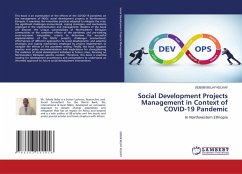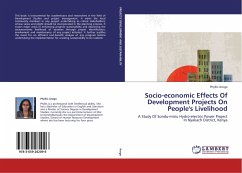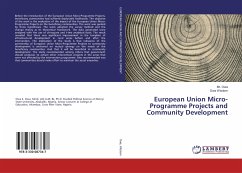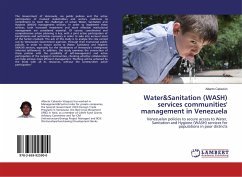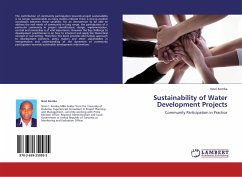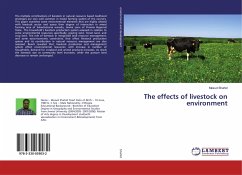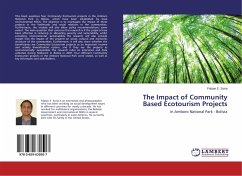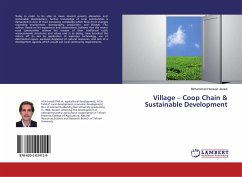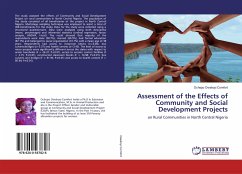
Assessment of the Effects of Community and Social Development Projects
on Rural Communities in North Central Nigeria
Versandkostenfrei!
Versandfertig in 6-10 Tagen
27,99 €
inkl. MwSt.

PAYBACK Punkte
14 °P sammeln!
The study assessed the effects of Community and Social Development Project on rural communities in North Central Nigeria. The population of the study consisted of all beneficiaries of the project in North Central Nigeria. Multistage sampling technique was employed to select a total of 458 beneficiaries for the study. Data for the study were collected using a structured questionnaire. Data were analyzed using both descriptive (mean, percentages) and inferential statistics (ordinal regression, factor analysis, ANOVA, t-test). The result showed that majority of the respondents were male (58.7%), ...
The study assessed the effects of Community and Social Development Project on rural communities in North Central Nigeria. The population of the study consisted of all beneficiaries of the project in North Central Nigeria. Multistage sampling technique was employed to select a total of 458 beneficiaries for the study. Data for the study were collected using a structured questionnaire. Data were analyzed using both descriptive (mean, percentages) and inferential statistics (ordinal regression, factor analysis, ANOVA, t-test). The result showed that majority of the respondents were male (58.7%), married (60.5%), had formal education (87.1%) and belonged to social organization (72.1%) with a mean age of 38 years. Respondents had access to classroom blocks (x=4 .00), box culverts/bridges (x=3 .37) and health centres (x=3 .45). The level of access to micro projects were significantly different across the states with respect to water boreholes (F = 26.37; P 0.01), access to erosion control facilities (F = 2.75; P 0.01), constructed classroom blocks (F = 74.98; P 0.01), box culverts and bridges (F = 91.94; P 0.01) and access to health centres (F = 85.94; P 0.01).



